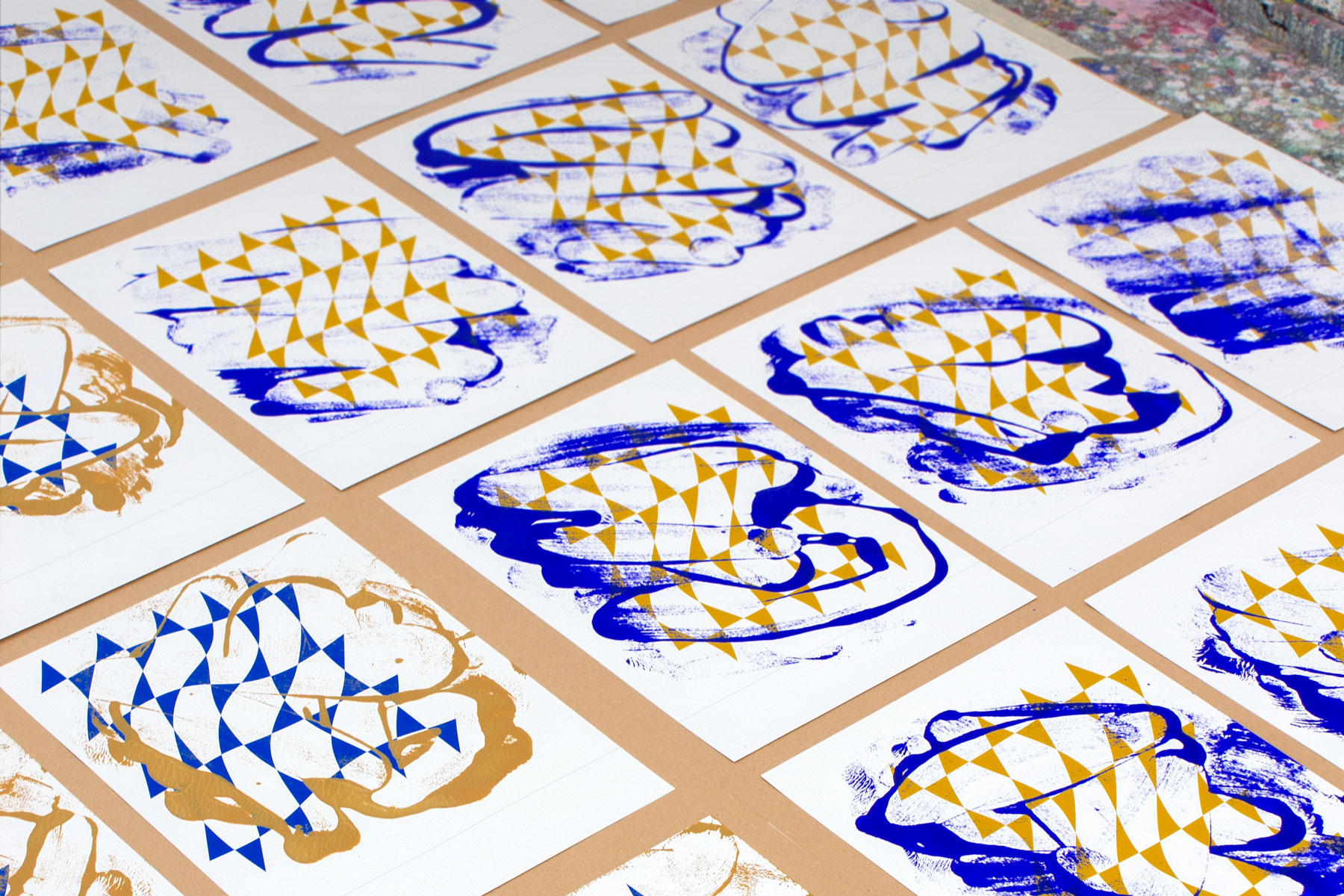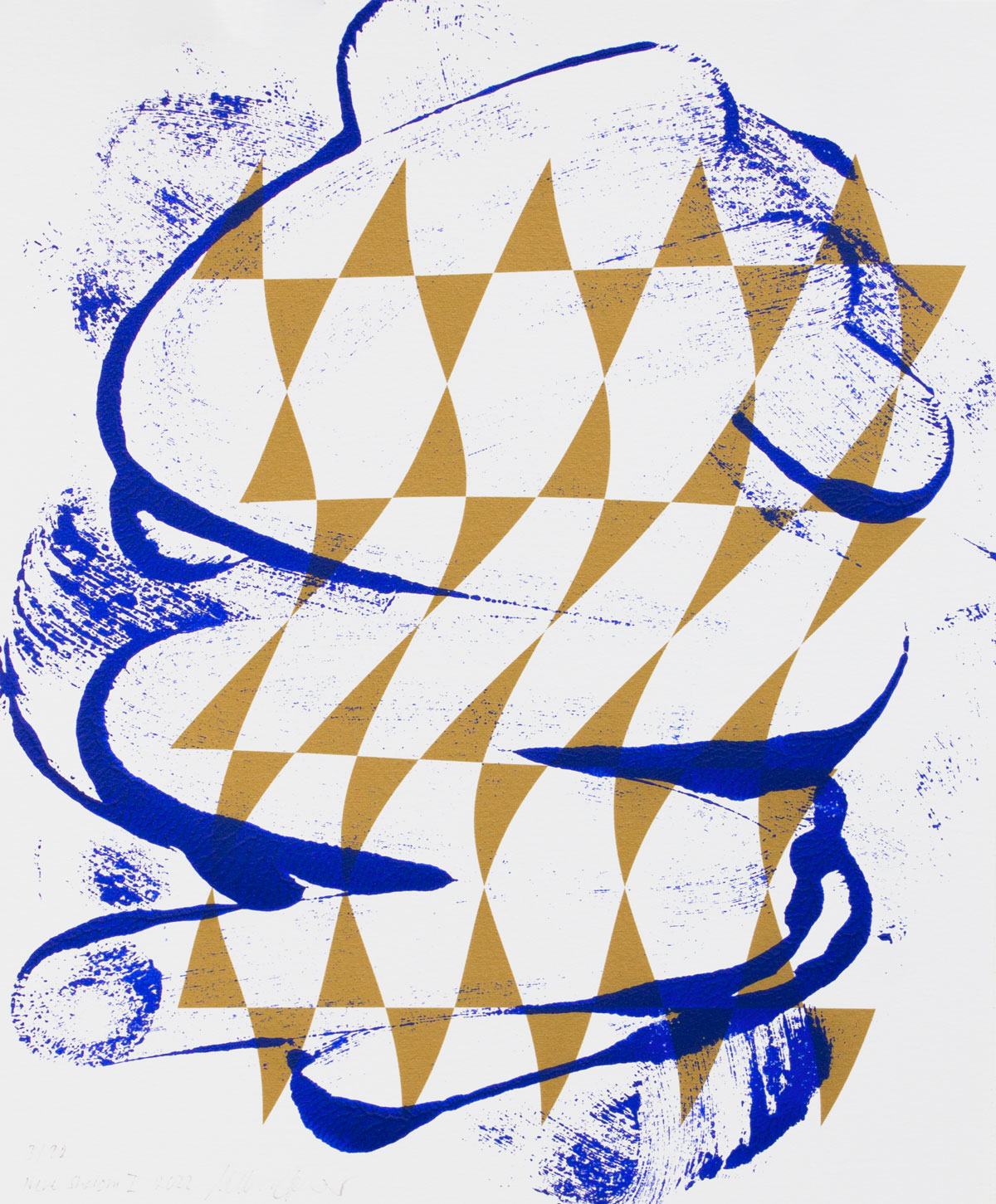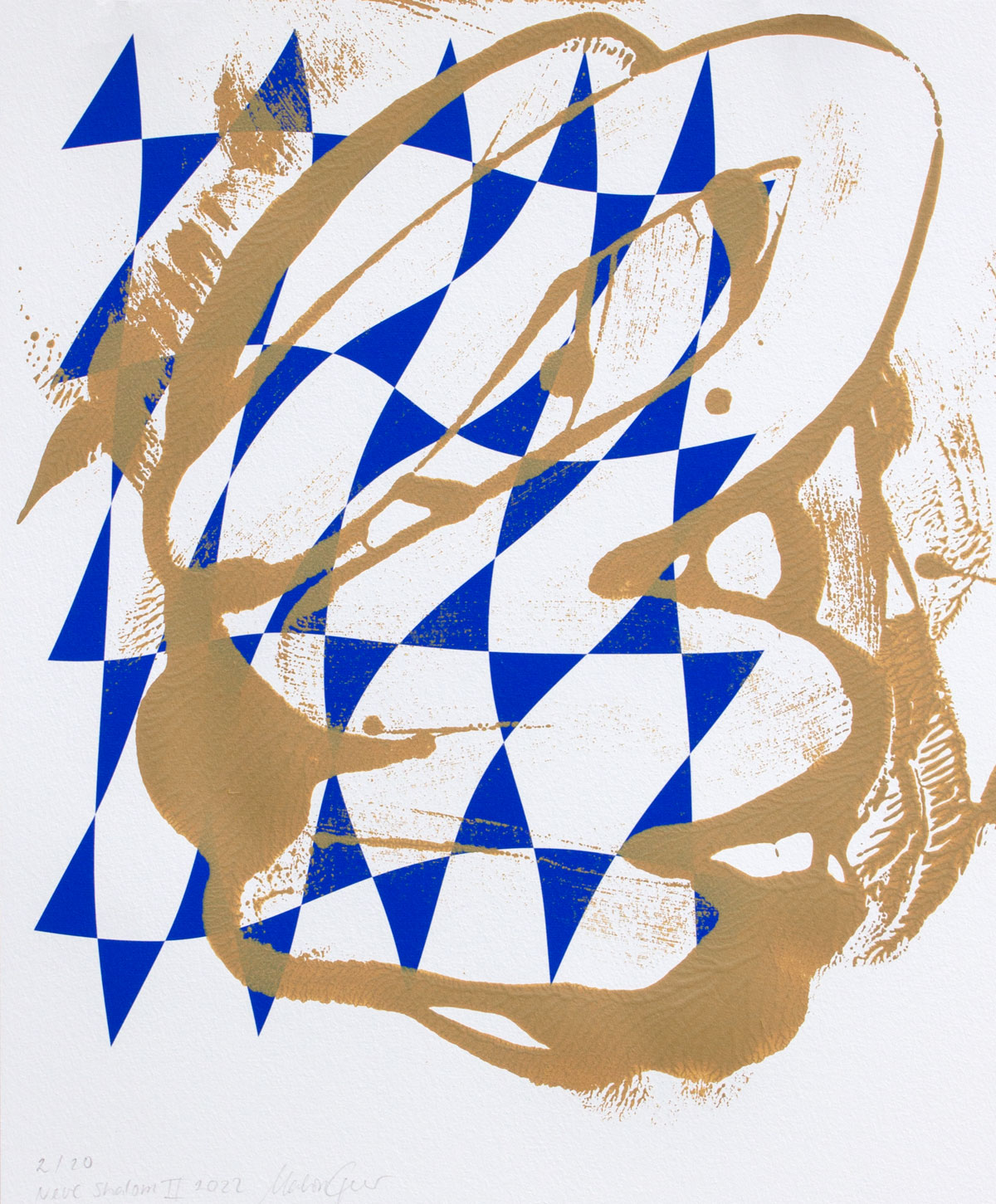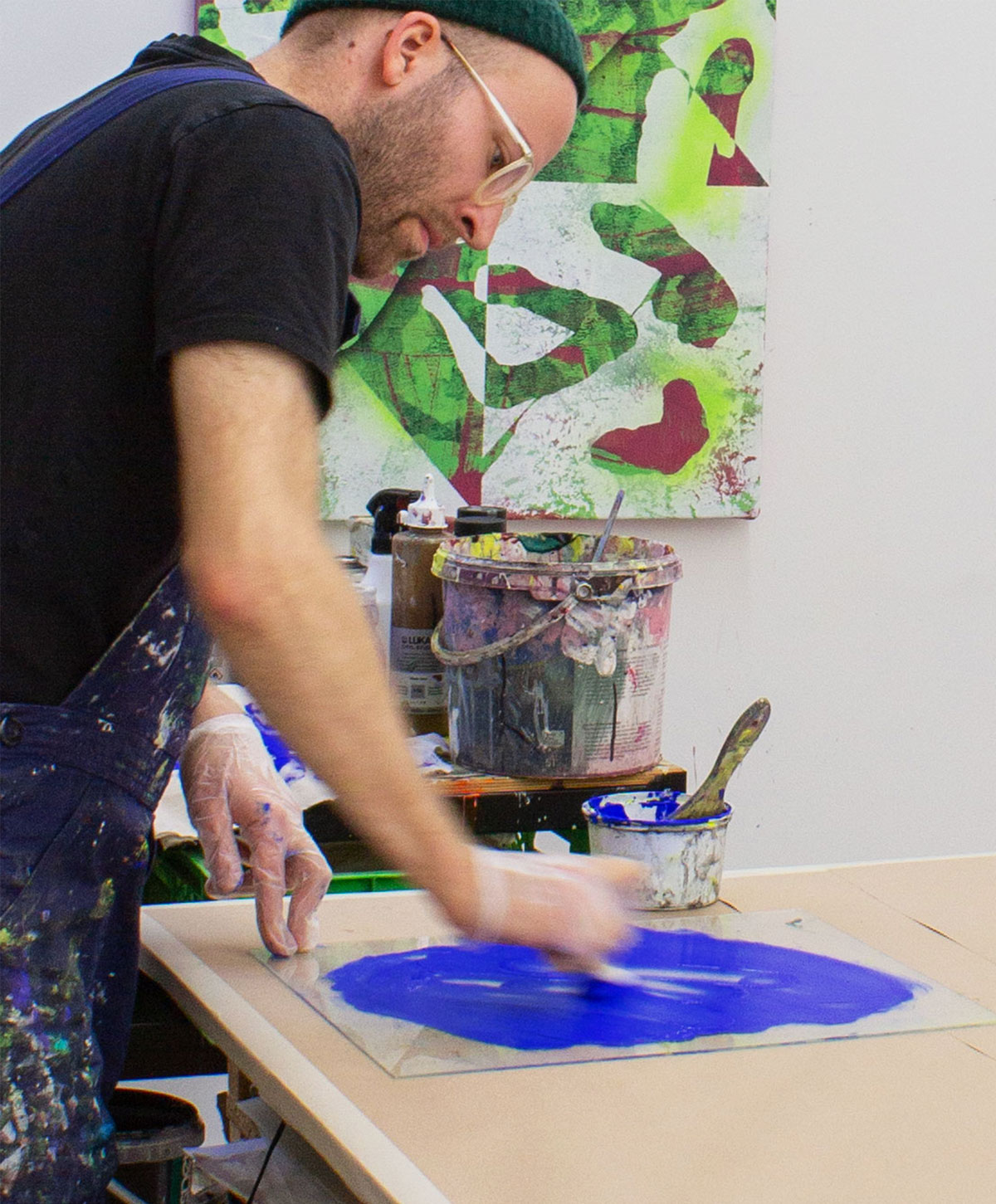





Neve Shalom
Meet Frida Foundation
Mit der Edition "Neve Shalom", bestehend aus zwei Variationen (Neve Shalom I und Neve Shalom II), möchte Malwin Faber an die jüdische Geschichte in Hamburg erinnern. Um 1700 ließen sich sephardische Juden und Jüdinnen in Hamburg nieder. Die Gemeinde Neve Shalom errichtete eine Synagoge in Altona, das zu dieser Zeit unter dänischer Herrschaft stand. Im Gegensatz dazu war das jüdische Leben in Hamburg strenger reglementiert. Schließlich konnte die Gemeinde 1834 am Alten Wall eine Synagoge in einem Hinterhof errichten, die jedoch durch den großen Brand von 1842 zerstört wurde. Kurz darauf wurde eine neue Synagoge nur wenige Häuser weiter wieder in einer Hinterhofsituation errichtet. Das Innere der Synagoge wurde nach Erzählungen mit maurischen Motiven und floralen, ornamentalen Mustern gestaltet. 1935 wurde die Synagoge geschlossen und vermutlich im Zweiten Weltkrieg 1940 durch Bombardierungen zerstört.
Die Arbeit besteht aus zwei Ebenen: einer grafischen Ebene, die digital gedruckt wurde, und einer Ebene, die der Künstler von Hand im Monotypiedruckverfahren erstellt hat. Das grafische Muster, das aus Dreiecken besteht, erinnert an ein wehendes Tuch, ähnlich einem Tallit (einem Gebetstuch im Judentum). Durch die Anordnung der Dreiecke entsteht auch die Form des Davidsterns. Das Grafische wird durch die Überlagerung von Spuren verstärkt, die durch den Monotypiedruck entstehen. Jedes einzelne Werk ist aufgrund des gestischen Farbauftrags und des Druckverfahrens einzigartig.
Neve Shalom
Meet Frida Foundation
With the edition "Neve Shalom," consisting of two variations (Neve Shalom I and Neve Shalom II), Malwin Faber aims to commemorate the Jewish history in Hamburg. Around 1700, Sephardic Jews settled in Hamburg. The Neve Shalom community established a synagogue in Altona, which was under Danish rule at the time. In contrast, Jewish life in Hamburg was more strictly regulated. Eventually, in 1834, the community was able to build a synagogue on Alten Wall, in a backyard, which was destroyed by the Great Fire of 1842. Shortly after, a new synagogue was constructed just a few houses away, again in a backyard setting. The interior of the synagogue was likely decorated with Moorish motifs and floral, ornamental patterns. The synagogue was closed in 1935 and presumably destroyed during bombings in World War II in 1940.
The artwork consists of two layers: a graphic layer, digitally printed, and a layer handcrafted by the artist using the monotype printing technique. The graphic pattern, composed of triangles, evokes a flowing cloth, reminiscent of a tallit (a prayer shawl in Judaism). The arrangement of the triangles also forms the shape of the Star of David. The graphic element is enhanced by the overlapping traces created by the monotype printing. Each individual work is unique due to the gestural application of color and the printing process.